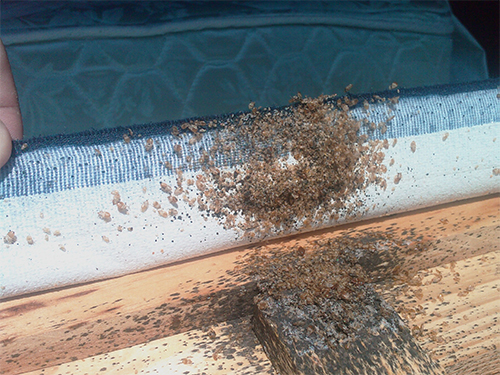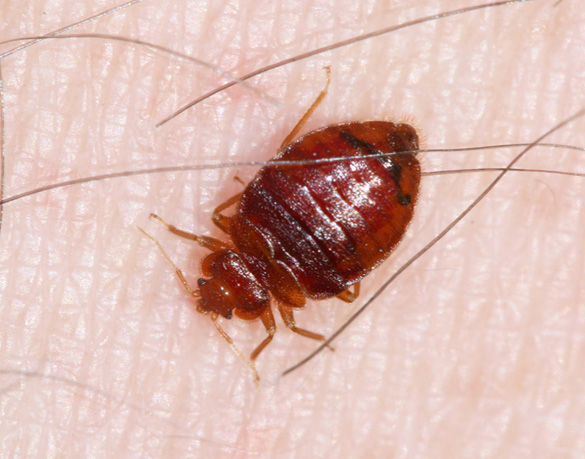Discover the Different Types of Parasite and Their Therapy Options for Effective Management
The management of insects in both agricultural and domestic settings necessitates an extensive understanding of the numerous types that can invade these atmospheres, in addition to the treatment options readily available for reliable control. From house rodents that pose health and wellness dangers to garden bugs that endanger crop returns, each group requires a tailored technique. Understanding the subtleties of bug actions and the corresponding remedies is crucial; nevertheless, the question continues to be: what are one of the most efficient strategies that not just address existing problems but also avoid future events?

Typical Home Vermin
Although family parasites can differ dramatically in kind and behavior, lots of share common qualities that make them a nuisance. Usual household parasites consist of rodents such as rats and computer mice, insects like cockroaches and ants, and periodic intruders such as crawlers and flies. These bugs typically grow in atmospheres that offer simple accessibility to sanctuary, water, and food, making homes specifically susceptible.
Rodents, for circumstances, are notorious for creating structural damages and spreading out disease. Insects like cockroaches are not only disturbing but can additionally trigger allergies and bronchial asthma in delicate individuals.
Effective insect monitoring starts with avoidance, that includes securing access points, maintaining cleanliness, and making use of ideal storage space techniques for food. Monitoring for signs of problem is vital, as early discovery can protect against more substantial issues. When problems take place, various control techniques exist, ranging from lures and traps to expert elimination services. Comprehending the habits and features of these typical family parasites is important for efficient management and preserving a healthy living setting.
Garden Bugs and Their Influence
Garden parasites position a substantial risk to the wellness and performance of plants, with some estimates recommending that they can trigger up to 40% of crop losses in certain areas. These insects, which include bugs such as beetles, caterpillars, and aphids, as well as nematodes, can cause severe damage by eating plant cells, causing stunted development, reduced yields, and jeopardized quality.
The influence of garden insects prolongs past mere aesthetic problems; they can interrupt ecosystems by modifying food cycle, affecting pollinators, and spreading out conditions amongst plants. Parasites like the crawler mite can deteriorate plants, making them much more prone to fungal infections. Invasive types may outcompete indigenous flora, leading to biodiversity loss.
Effective administration methods are important to minimize these risks. Integrated Bug Monitoring (IPM) practices, which integrate organic control, cultural practices, and targeted chemical applications, can give sustainable solutions. Regular tracking and early treatment are vital in avoiding infestations. bed bug heat treatment. By recognizing the particular insects and their behaviors, garden enthusiasts can execute targeted treatments that not just shield their plants however additionally promote a much healthier garden environment.
Rodents: Identification and Risks
Rats are usual yard bugs that can position significant threats to plant health and overall ecological community stability. These small creatures, including varieties such as voles, mice, and rats, are usually recognized by their sharp incisor teeth and robust bodies. Their hair coloration differs widely, ranging from grey to brownish, and they typically show a lengthy tail which aids in equilibrium and dexterity.
The dangers connected with rodent invasions are complex. They can cause considerable damages to plants and yards by gnawing on stems, roots, and fruits, which can lead to considerable economic loss for gardeners and farmers. Rodents are notorious for their duty click reference as vectors of different illness, consisting of hantavirus and leptospirosis, which can be transferred to people and pets (bed bug heat treatment). Their droppings and pee can pollute dirt and water resources, intensifying wellness threats.
Furthermore, rodents can interrupt the natural balance of regional environments by completing with native wildlife for resources. Their burrowing routines can lead to dirt disintegration and destabilization of plant origins. Very early identification and understanding of rodent behaviors and threats are critical for reliable bug administration.
Effective Therapy Techniques
When handling rodent invasions, utilizing reliable treatment approaches is vital for minimizing damages and health dangers. Break traps and digital catches offer a fast and gentle way to get rid of rats, while adhesive traps can assist keep an eye on activity levels.
Secondly, lure stations containing rodenticides can be tactically put in locations of high rodent activity. These stations should be view publisher site tamper-resistant to ensure the security of non-target pets and youngsters. It is important to choose the ideal bait type, as rats can establish lure hostility otherwise transformed occasionally.
In enhancement to traps and bait, sealing entry points can substantially lower the opportunities of re-infestation. This entails inspecting and fixing voids in windows, doors, and walls.
Lastly, expert bug control solutions can be helpful for comprehensive problems. They have the know-how, devices, and items needed for efficient elimination and can develop a customized administration plan. By applying these therapy approaches, home owners can effectively resolve rodent problems and safeguard their wellness and building.
Preventative Steps and Tips

Preserving tidiness is just as critical; make sure that food is kept in closed containers and quickly clean up spills or crumbs. Routinely disposing of rubbish and making certain that compost heap are managed correctly can prevent parasites from being brought in to your home.
Additionally, consider landscape design practices that dissuade rodent habitation. Trim plant life and keep mulch far from the foundation of your residential property, as these can provide hiding spots for pests.
Final Thought
Effective bug monitoring necessitates a detailed understanding of various insect types and their specific therapy choices. Tailored approaches for house parasites, garden insects, and periodic intruders are necessary for lessening dangers and enhancing control measures. By incorporating reliable treatment methods with preventative approaches, such as regular assessments and preserving tidiness, the possibility of infestations can be dramatically lowered. Ultimately, a proactive stance on bug administration fosters a much healthier atmosphere, guarding both property and agricultural rooms from pest-related difficulties.
Common house bugs consist of rodents such as mice and rats, insects like roaches and ants, and periodic invaders such as crawlers and flies.Rodents are common garden parasites that can position significant threats to plant health and wellness and general environment security. Early recognition and understanding of rodent actions and threats are critical for effective insect management.
Efficient bug monitoring starts long prior to an infestation occurs, with positive procedures that can dramatically reduce the possibility of rodent entrance and habitation.Effective pest management necessitates an extensive understanding of different insect types and their certain therapy choices.